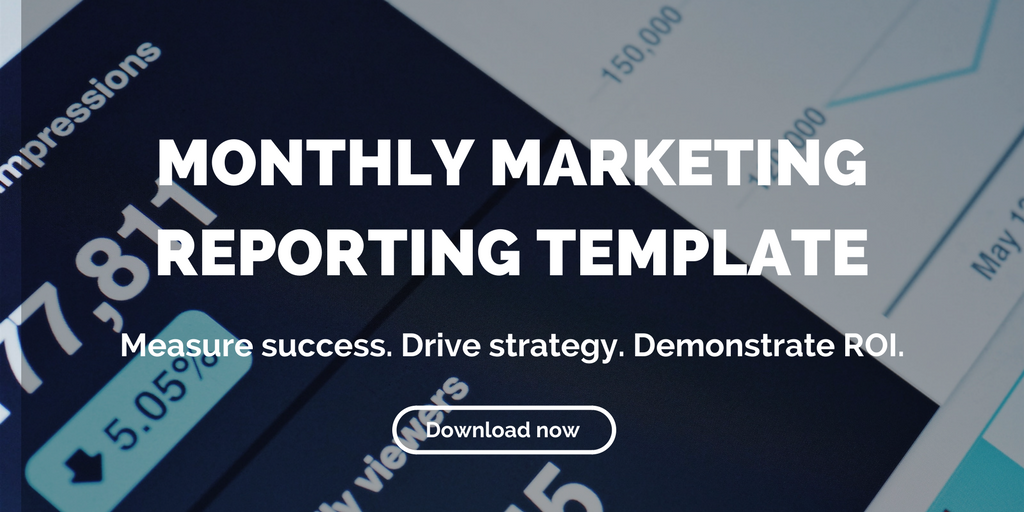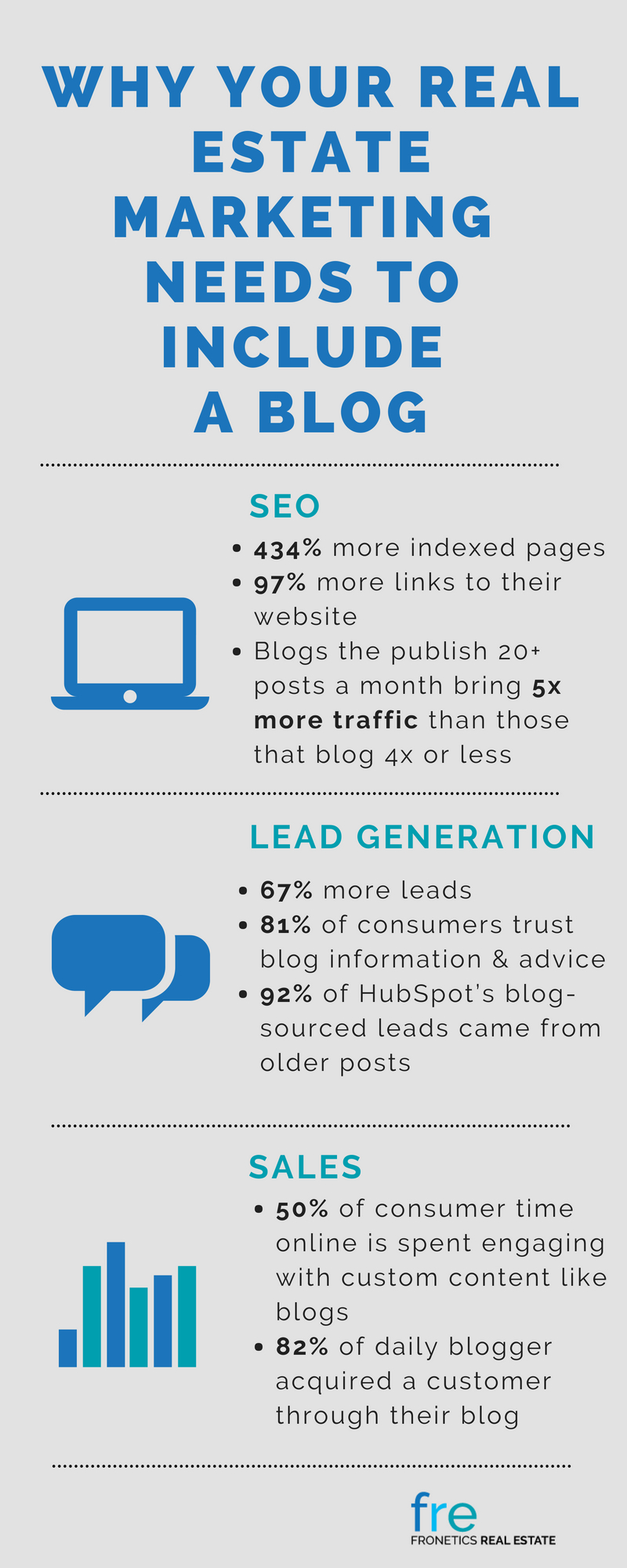Archive for the "Real Estate Marketing" Category

How Inbound Marketing for Real Estate Works to Improve Sales
Increasingly, marketers are realizing the benefits of inbound marketing for real estate over outbound marketing, including cost savings and increased lead generation.
Marketers are constantly coming up with new and trendy ways to attract leads. With endless platforms available to us, it can be overwhelming for even the most seasoned marketers to know where they need to focus their efforts.
But what exactly does inbound marketing for real estate entail?
In order to find the right solutions for your real estate marketing needs, you first have to understand the difference between inbound and outbound marketing. And more importantly, how they can help — or hinder — your marketing efforts.
This is outbound marketing
Outbound marketing describes any marketing approach that pushes a message onto a buyer or renter. Traditional marketing — TV and radio ads, telemarketing, banner and display ads — are all examples of outbound marketing.
Another name for this marketing tactic is interruption marketing, as it typically tries to take “attention away from what your buyer is doing and bring it, forcibly, on to your product or service.”
This is inbound marketing
Inbound marketing focuses on audiences finding you. Instead of pushing a message onto buyers, inbound marketing allows you to establish your brand as an industry leader and let interested audiences come to you and your properties. This type of marketing attempts to draw in leads through interesting and engaging content.
Content marketing is a type of inbound marketing. Examples include blog posts, social media, infographics, white papers, and videos. Inbound marketing for real estate, for instance, could include blog posts that talk up the neighborhood in which your property is located, infographics that explain the purchasing process, or a white paper on how to search for an apartment.
Why is inbound marketing for real estate a good fit?
Outbound marketing used to be the “go-to” for generating leads, but this is simply no longer the case. Marketers across industries have found that inbound marketing has many advantages over traditional marketing practices. In fact, almost three quarters (68%) of inbound organizations believe their marketing strategy is effective, while more than half (52%) of outbound marketers don’t believe their strategy is effective.
According to Placester’s Matthew Bushery, “inbound is all about enticing the right buyers and/or sellers through sharing materials and resources that make them want to engage with you, rather than figuratively shoving your self-promotional messaging down their throats with over-the-top, aggressive, and — most importantly — wasteful marketing schemes.”
That’s why we think inbound marketing for real estate is better for marketers than outbound marketing.
Related posts:
- Infographic: Statistics that Prove Why Your Real Estate Marketing Needs to Include a Blog
- Content Marketing vs. Sales Staff: Who Does What?
- Our 6 Favorite Marketing Automation Tools for Real Estate Marketers
Archive for the "Real Estate Marketing" Category

What You Should Know About Real Estate Chatbots: An Introduction
To reach your future customers, don’t ignore the significance of real estate chatbots in shaping the content marketing landscape.
Chatbots are the latest trend in artificial intelligence for marketers, and the real estate sector should be taking note.
Real estate chatbots can help automate and improve some of your marketing and customer service efforts. But to get the most out of these automated systems, you first need to understand what they are and how they work.
What is a chatbot?
A chatbot is a computer program that simulates human conversation using auditory or textual methods. Basically, it’s a software that communicates with your customer inside a messaging app, like Facebook Messenger. Chatbots are similar to email marketing, but rather than ending up in your inbox, they communicate through a messaging app.
Real estate chatbots are typically used to converse with potential clients at the very top of the funnel — people you don’t know, and who might or might not be ready to move on to the next stage of the process.
Why are chatbots so popular?
As our mobile devices continue to change the way buyers receive and interact with our brands and properties, messaging-app usage has skyrocketed. In fact, 2017 saw a 69% increase in messaging-app users from the previous year. Business Insider reports the number of people on messaging apps surpassed the number of users on social networks. From iMessage to Facebook Messenger, mobile users are leaning more toward this newer technology to communicate with friends and family.
Why the big drop for email? Because people are buried in emails. For example, the average office employee receives 121 emails per day. Of those 121 emails, only around 20% are opened — and click-through rates are even lower. More and more companies have stuffed inboxes with repeated emails. Over-communication is the number one reason that readers unsubscribe to your email list. Chatbots have alleviated the inbox drama.
How can a real estate chatbot help my business?
Quality messaging without the spam
Real estate chatbots take the spam out of email marketing. When companies market on a messaging app, they create an easier way for leads to receive educational messages about their brand and properties. Chatbots are an easy and fun way for potential buyers and renters to engage with your brand, getting answers to their questions and quality messaging about your products and services.
Ease of tracking and segmenting
Your brand will also appreciate the ease of tracking and segmenting your leads through chatbots. Take Facebook Messenger for example; using messenger bots, you can identify who your potential buyers and renters are in less than a minute. No other platform (email, social media) can get you that information as quickly or efficiently.
Increased audience engagement
Getting your audience to subscribe to your real estate chatbots is much easier than email subscriptions. Why? The ease of usage and lack of friction on messaging apps creates a more positive customer experience. Businesses can set up chatbots to message any user who comments on your social media pages. They can retarget people who have left your site, offering special discounts or promotions on your properties. And chatbots can also nurture the sales process by notifying you of potential customers that request a specific action during their interaction with your chatbot.
How do I create a chatbot?
There are plenty of chatbot-building platforms available online. Before you pick a platform, make sure you do your research. Here are three of our favorite chatbot-building platforms.
1. Chatfuel
This chatbot engine will do most of the hard work for you, ideal for those lacking programming experience. MTV, TechCrunch, BuzzFeed, British Airways, and Adidas are said to have used Chatfuel to create their chatbots, along with almost 20,000 other users across the globe. The user interface is easy and slick, meaning you could create a chatbot in less than 15 minutes!
2. Chatscript
Launched back in 2011, ChatScript is a “next generation chatbot engine,” which has won the Loebner Prize (awarded for the most human-like examples of artificial intelligence) four times. It provides an open source framework for developers to build and deploy chatbots.
3. Facebook ‘Bots for Messenger’
At its F8 developer conference in April, Facebook launched Bots for Messenger, a tool which allows developers and businesses to build chatbots for its Messenger platform (which is used by almost a billion people). Developers build bots, submit them for review, and then Facebook decides which ones get onto Messenger. The three main capabilities are its send/receive API, generic message templates, and the ability to customize the welcome screen users first see when interacting with your bot.
Messaging automation is the new email automation. Brands will be looking to join the chatbot craze for the ease, convenience, and the positive audience experience. Have you tried a chatbot program yet? We’d love to hear from you about your experience.
Related posts:
- 10 Social Media Statistics for Real Estate Marketers 2018
- Social Media Trends for 2018 Real Estate Marketers Need to Know
- 10 Must-Follow Blogs for Real Estate Marketers
Archive for the "Real Estate Marketing" Category

Infographic: Statistics that Prove Why Your Real Estate Marketing Needs to Include a Blog
If you’re a real estate marketer who’s not blogging, you’re missing out.
Everyone knows you need a property website to succeed in this industry. But when it comes to making that website competitive, many abandon the brightest idea that would help them in doing so — namely, blogging.
Real estate blogging does its bit for lead generation, SEO, and sales. So if you think your property can thrive without it, you might want to think again.
Search engine visibility
As search engine algorithms get increasingly complex and sophisticated, the quality of your website’s content becomes more and more important. It’s your content that informs search engines about your site (not just keywords anymore), improving your rank in relevant search queries. And the stats bear it out — according to HubSpot, companies that blog receive 434% more indexed pages on average and 97% more links to their website.
Another fact to consider: according to a recent study by Search Metrics, the average word count of the highest ranking content in Google is between 1,140-1,285 words. In other words, long-form content, like blog posts, is one of the best things you can do to improve your website’s SEO.
But don’t be fooled into thinking that quantity outranks quality. Simply pumping out a high word count isn’t enough. Your content needs to be well-written, thoroughly researched, and engaging.
Lead generation
Blog content is ideal to share (and link to) in email or social media marketing campaigns. It can help undecided leads learn about your properties and sway them in a positive direction. Sharing your blog posts on your social media accounts helps give validity and authority to your company, as you disseminate content you created yourself.
A recent study from the Content Marketing Institute found that 67% more leads are generated by companies with an active blog. Not only that, 81% of U.S. online consumers trust information and advice from blogs. So your blog is your best bet in terms of becoming a trusted resource for your audience — leading directly to more effective lead generation and nurturing.
Sales and relationships
61% of buyers report feeling better about a company that delivers custom content and are therefore more likely to buy from that company. And furthermore, HubSpot reports that 50% of consumer time online is spent engaging with custom content — like blogs. And perhaps most powerfully, 82% of marketers who blog daily acquired a customer using their blog, as opposed to 57% of marketers who blog monthly. Blogging helps you sell real estate, and it helps you build lasting and fruitful relationships with your audience.
Check out our infographic for statistics on why your real estate marketing strategy should include blogging.
Infographic: Why your real estate marketing should include a blog
Related posts:
- 4 Ways a Blog Can Help You Sell Real Estate
- Drive More Traffic and Generate More Leads with Your Real Estate Blog with our Editorial Calendar Template
- Fronetics Real Estate Blog Named Top 60 Real Estate Marketing Blog
Archive for the "Real Estate Marketing" Category

July 6 is One of the Busiest Days of the Year for Real Estate Searches
Real estate searches peak after holidays, and July 6 is one of the biggest peaks of the year. Are you ready to make the most of it?
If you’re a real estate marketing professional who puts your feet up after the holidays — it’s time to reconsider your strategy. Unlike the post-holiday retail lull, real estate searches actually pick up as potential buyers use their downtime to go online to consider real estate investment.
Now is your chance to capture those leads.
Here’s how to take advantage of the post-Fourth of July uptick in real estate searches.
Publish blog posts on a normal schedule
We all know that blogging can help you sell real estate in all kinds of ways — from increasing search visibility to nurturing leads. But did you realize blog posts are the gifts that keep on giving? The majority of traffic will visit your posts months after they’re published. We’ve found that 80% of our page views occur on blog posts published at least six months prior. Bear that in mind when you’re creating your editorial calendar: to capture future searches, the six-month mark can be a great time to write about trends or happenings in the coming year.
Search engines reward consistency and predictability in your publishing schedule. So, keep your normal frequency throughout the year, and it will help your rankings during high-traffic times.
Be strategic about social media to capitalize on real estate searches
Social media management can be an extremely time-consuming task, so dialing back your posting on the days when you know that prospects won’t be spending time online can help you conserve resources for the high-traffic days. July 6 is definitely a day when you should maximize your social media output, both in terms of frequency and quality. This doesn’t mean posting constantly, but it does mean it’s a great time to unveil new content, post interesting statistics, and interact with your followers. Chances are, many of your competitors will be shut down for the holiday, and your posts will be front and center in your prospects’ newsfeeds.
Be strategic about digital advertising
The same goes for digital advertising. Knowing that July 6 is a big day for real estate searches, you should budget your pay-per-click and social advertising dollars to spend more on this day. It’s a good time to focus particularly on your Google AdWords spend, as that will capture prospects using search engines to find information about potential real estate investments — as opposed to sponsored social posts, which display your ads in the newsfeed of a prospect who may or may not be ready to buy.
Post-holiday real estate searches present a big opportunity. Seize it.
Related posts:
- 10 Social Media Statistics for Real Estate Marketers 2018
- How to Measure Brand Awareness: A Guide for Real Estate Marketers
- Top 10 Real Estate Marketing Posts 2017
Archive for the "Real Estate Marketing" Category

How to Measure Social Media ROI with Google Analytics for Real Estate
Measuring social media ROI can be a daunting task, but Google Analytics can help. Gauge the effectiveness of your social media strategy using these four data points in Google Analytics.
Many real estate businesses struggle with measuring social media ROI. Even for seasoned content marketers, the collection of data is one of the most daunting tasks. But it’s important to get it right, for several reasons:
To understand how your strategy is working.
- To determine where changes need to be made.
- To allocate appropriate resources.
Don’t waste time trying to track down information on your various social accounts to measure social media ROI when you can find the most pertinent information with a single tool. The best part is: You’re probably already using it. (And it’s free!)
You need data to measure social media ROI
Google Analytics is an incredible tool for businesses large and small looking to gain insight into the who, when, and where of their web traffic. And while it may seem intimidating to the novice, it’s very easy to use once you know where to find what you’re looking for.
Here’s how to start gauging the effectiveness of your social media strategy — and measure social media ROI for real estate.
Step 1: Look at where your traffic is coming from.
How much of your traffic is coming from social media? Google Analytics will provide an overview of the overall traffic sources that deliver visitors to your website, including traffic from social media. This high-level view of your traffic includes:
- Search (people clicking through from Google or Bing)
- Social (Twitter, Facebook, etc.)
- Direct (people typing your site in their browser or bookmarks)
- Referral (people clicking links from other sites to get to you)
- Paid search
- Other
To access this report in Google Analytics, go to Acquisition > All Traffic > Channels.
Go a step further and review the volume of traffic that comes from specific social media networks, by clicking on Acquisition > Social > Network Referrals.
It’s important to have a diverse mix of traffic sources, which should be reflected in the traffic sources report. If a large portion of your traffic comes exclusively from one source, especially if that source is not social media, it is time to reconsider your social media strategy. Similarly, if one network is driving most of your traffic, you should examine when and what you are posting in the non-performing channels.
Step 2: Determine revenue derived from posts.
Make sure to include links back to your site when you post on social media so that Google Analytics can track and analyze them. You’ll want to add a UTM code (aka UTM parameter), which is text added to the end of a URL (after the “?”) to identify the success of a campaign. As an example, the UTM code is in boldface below:
You can set unique UTMs for all of your social media, per channel, or even per update. By analyzing your different UTM parameters, you can determine which URLs are most effective in driving users to your content.
Set UTM parameters through Google’s URL Builder. Once your parameters are set, you can go to Acquisition > Campaigns > All Campaigns to see the revenue from any individual UTM tag, like a post or tweet.
Step 3: Look at how your content is being digested.
Analytics allows you to see how long a visitor stayed on your site, (use the Duration goal to find out). Examine how content and properties resonate with the social media audience by using Set up the Pages/Screens per Session goal or learn how many times visitors from social media play website video with Create an Event goal for specific tracking.
Step 4: What is social media bringing you in conversions?
Google Analytics has conversion funnel reports that show how much social media is contributing to conversions. To set up conversion funnels in Google Analytics:
Use the Goals section and connect any type of conversion event.
- Access your funnel report through Conversions > Multi-Channel Funnels > Top Conversion Paths.
These four insights from Google Analytics can help you determine how effective your social media strategy is in terms of traffic, direct revenue, visitor behavior, and conversions. Use this information to continually measure social media ROI and refine your strategy to get the most out of your social media presence for your brand and properties.
Related posts:
- What Metrics Should You Track in Real Estate Marketing?
- Measure Social Media Success in Terms of Potential, not Dollar Amount
- The Metrics You Should Be Measuring in Real Estate Marketing (Hint: Not Vanity Metrics)
Archive for the "Real Estate Marketing" Category

Measure Social Media Success in Terms of Potential, not Dollar Amount
Social media gives you access to aspirational buyers and their networks, a benefit that can’t be quantified in dollars. It’s time to redefine social media success.
One of the trickiest things about implementing a social media strategy is that social media success can be difficult to measure. While most real estate professionals acknowledge that a social media marketing presence is important, it’s hard to make a case for resources when you can’t precisely quantify the value in terms of dollar amount.
Of course, you shouldn’t stop recognizing the importance of social media as part of a robust marketing strategy. You need to start thinking about value in terms of potential, rather than an immediate sale or rental.
Social media success in real estate will seem more attainable if you:
- Shift the focus from short-term sale to the long-term value of social media.
- Trust your efforts will pay off, even if not immediately.
- Find new ways to measure results over time.
Social media success comes from access to a new audience
Social media allows real estate professionals to discover and engage with a new segment of the market: aspirational buyers and renters. Suddenly, you are faced with an exciting prospect: access to a population that businesses in the past could not reach. Now that we can find out who they are, their long-term value cannot be overstated:
- They are your potential buyers.
- They can build brand loyalty for your business.
- They can engage with your properties.
According to a recent study published in MIT Sloan Management Review, aspirational buyers are likely to follow multiple brands on social media sites. Over half follow at least one brand that they haven’t made a purchase from. But, “our data suggests that they do plan to purchase in the future,” say the study’s authors. “Today’s followers are very likely to be tomorrow’s customers.”
It’s easy to see the implications for real estate marketing, as you can target your messaging for individuals who may not yet be ready to sign a contract, but who are following your properties with interest.
The social network = social media success
There’s another factor to consider regarding the value of social media marketing. At its core, these are networking platforms. That means you not only have access to a new audience base, but to their connections as well.
Your followers’ engagement on social media can expand the reach of your brand and properties, as they engage with their own networks. Putting a dollar value on such social reach is fairly meaningless — but it has the potential to add to your bottom line both now and in the future. For social media success, reach is an important part of the equation.
What’s more, a recent McKinsey study attributes word of mouth to be the primary influence for up to 50% of all purchase decisions. The study authors go on to say, “Followers who are not yet purchasers can share their experience with the brand, and deepen their commitment to the brand, even prior to that first purchase.”
It’s time we start thinking about social media success in this new way: in terms of potential and expanding value, rather than just immediate dollar amounts.
Related posts:



